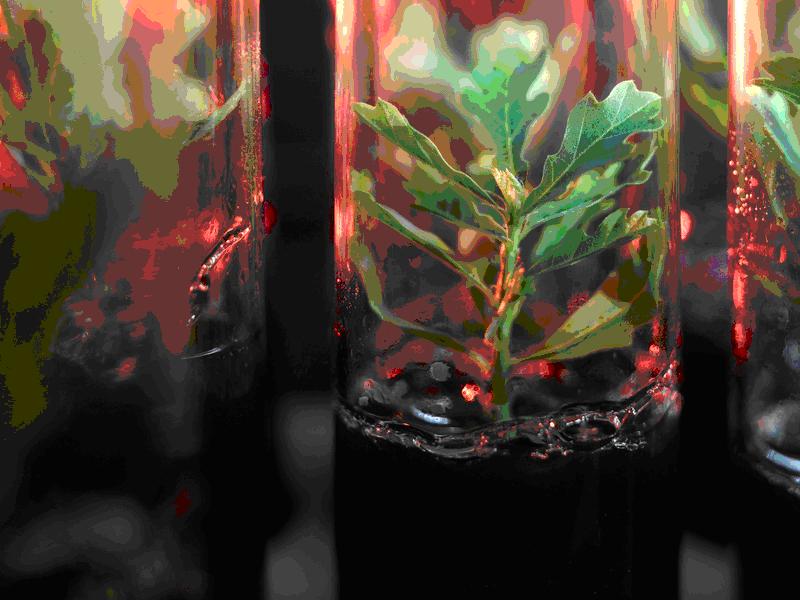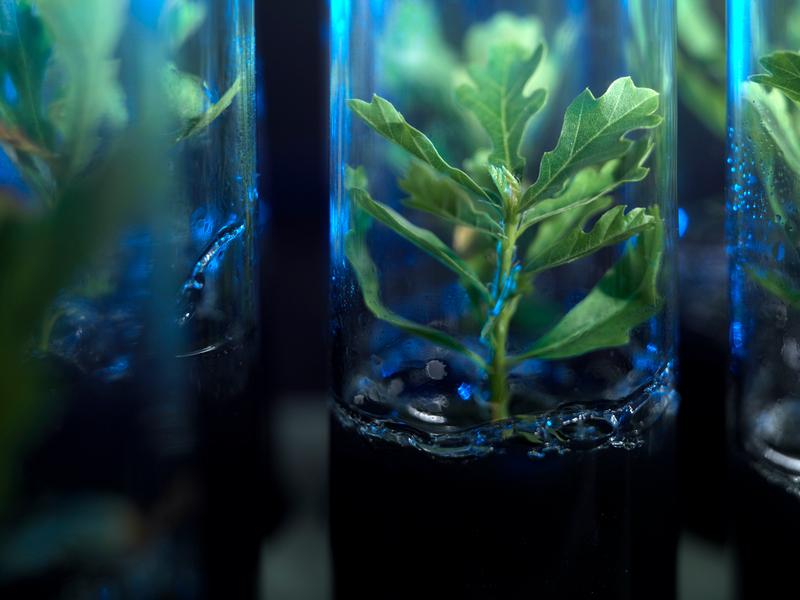Project Part 2: RootCons
(Collembola and nematodes)
L. Rueß and S. Scheu
Effects of root and fungal feeding animal consumers on rhizosphere interactions and oak performance
Auswirkungen von wurzel- und pilzfressenden Bodentieren auf Rhizosphären-Interaktionen und Eichenwachstum
The proposed project investigates the gene expression response of mycorrhizal and non-mycorrhizal oak microcuttings to major rhizosphere animals, root and fungal feeding invertebrates, represented by nematodes and Collembola, respectively. The gene expression response of the plants will be investigated using Illumina RNA-Seq and qRT-PCR technologies in parallel to carbon and nitrogen allocation patterns using 13CO2 and 15N pulse labelling. Two growth phases of oak microcuttings i.e., root and shoot flushes and their response to root and fungal feeders in the rhizosphere will be studied. In a further experiment the time dependent flux of carbon into rhizosphere compartments including roots, soil microorganisms and fungal feeders will be investigated using bulk 13C and compound specific 13C lipid analysis. Both separate and combined effects of nematodes and Collembola will be studied. In addition, interactions between root feeding nematodes and beneficial rhizosphere bacteria (actinomycetes) will be investigated to obtain a comprehensive picture on rhizosphere microbial communities. The project aims at getting detailed insight into the genetic and C allocation response of oak microcuttings to animal rhizosphere consumers, and the implications of these interactions for rhizosphere microorganisms.
Das geplante Projekt untersucht die Interaktionen zwischen Bodenfauna und Genregulation von mykorrhizierten und nicht-mykorrhizierten Eichenstecklingen. Der Fokus liegt auf den dominanten wurzel- und pilzfressenden Invertebraten der Rhizosphäre, Nematoden und Collembolen. Die Effekte auf die Genexpression der Pflanzen werden mittels Illumina RNA-Seq und qRT-PCR Verfahren, und parallel die Kohlenstoff- und Stickstoffallokationsmuster über Pulsmarkierung mit 13CO2, und 15N erfasst. Beide rhythmischen Phasen, Spross- und Wurzelwachstumsschub, werden untersucht. In einem weiteren Experiment wird der zeitabhängige Fluss des Kohlenstoffes in verschiedene Kompartimente der Rhizosphäre (Wurzel, Mikroorganismen, Pilzfresser) über die Bestimmung von 13C/12C in Gesamtgewebe und spezifischen Fettsäuren ermittelt. Der Effekt von Nematoden und Collembolen allein sowie in Kombination wird quantifiziert. Zusätzlich werden die Wechselwirkungen zwischen wurzelherbivoren Nematoden und nützlichen Rhizosphärenorganismen (Actinomyceten) untersucht, um ein vollständiges Bild der mikrobiellen Interaktionen in der Rhizosphäre zu erhalten. Ziel des Projektes ist es, einen detailierten Einblick in die Veränderungen der Genexpression und Kohlenstoffallokation der Eichenstecklinge durch tierische Konsumenten im Boden, und deren Auswirkungen auf Mikroorganismen der Rhizosphäre, zu erhalten.




